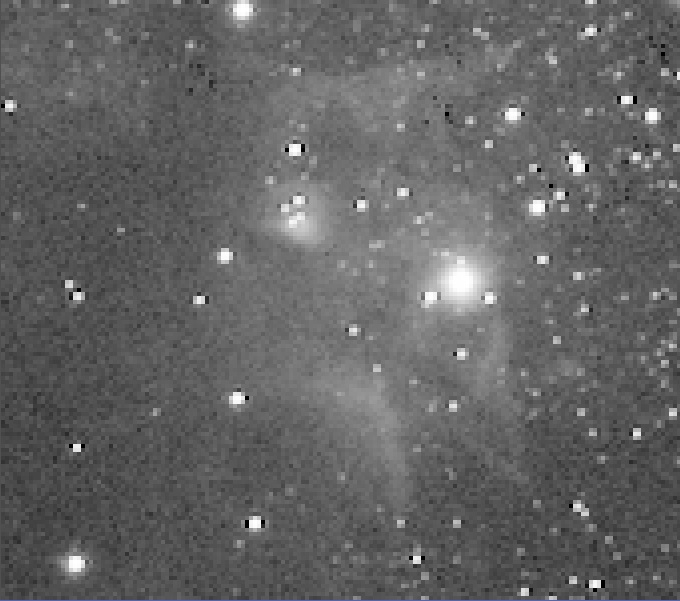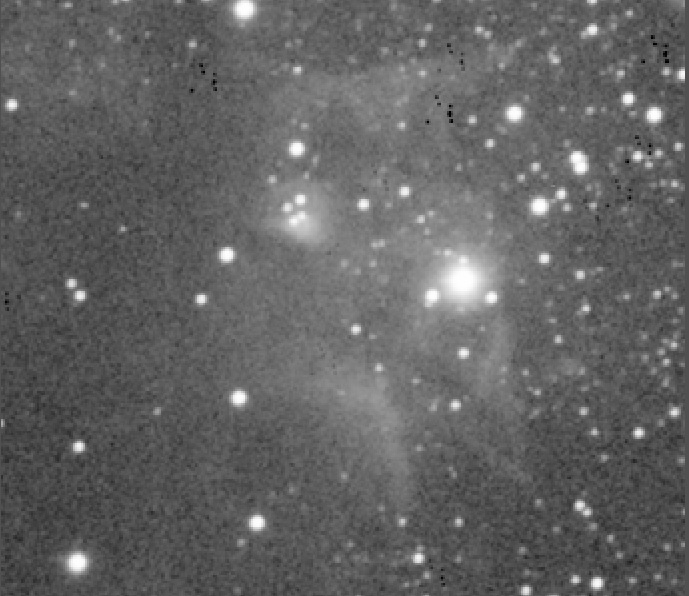I was reading about the PixInsight tool SubFrameSelector, and wanted to see if it would be more useful for eliminating poor images from my work process. So, I decided to try with and without bad frames to see the effect. Two issues were in my head:
- Historically, I have simply eyeballed the images and removed obviously bad subframes. Trailed stars, guiding errors, etc. Perhaps a more rigorous approach would yield sharper results.
- I read the presentation Image integration techniques : Increasing Signal/Noise Ratio and outlier rejection with PixInsight by Jordi Gallego. Most of the discussion was typical and reasonable. However, at the end he showed a shocking example where he added an obviously bad subframe with guide errors, and got a better integrated image! Hmmm, maybe I shouldn’t be eliminating the bad frames!
I had some images awaiting processing. They are from an SBig ST2000XM through a Tak Sky90, with various filters. I haven’t finished taking all the images (missing Blue, the HAlpha needs to be redone). Also, I have been experimenting with using a UHC filter for my Luminance frames. I know I am not supposed to use UHC for astrophotography, although I don’t know why.
I used the expression
(FWHMSigma < 2) && (SNRWeightSigma > -2) && (EccentricitySigma < 2.5)
to approve subframes. I should note that I had already removed obviously bad frames, so this was rejecting frames that “looked” OK.
At the same time, I wanted to play with the Drizzle tool. The criteria for using this are
- Lots of frames, on the order of 20. My sub counts range from 7 to 28 (15 minute) subs, depending on which selection criteria I use. So, I will test the effect of drizzling on smaller sub counts.
- Undersampled frames. My setup gives 3.74 arcseconds per pixel, so I think I meet this criteria. The FWHM reported by FWHMEccentricity is less than 2 pixels.
I also want to see the effect of drizzling with a scale of 2 versus 4. If 2 works, maybe 4 would be better, other than the huge file size?
The table below summarizes the results. I either integrated the subs recommended by SubFrameSelector, or used all of the frames. In the HAlpha case SubFrameSelector accepted all 18 frames, so there isn’t a smaller subset case.
I used the MAD value reported by the Statistics tool as my measure of noise. I also looked at average deviation (Statistics) and the NoiseEvaluation script; these values showed the same patterns as the MAD results, so I didn’t put them in the table.
| ImageIntegration Effects | ||
|---|---|---|
| SubFrameSelector and Drizzle | ||
| n (Number Frames) | MAD | |
| Green | ||
| SubFrames | 7 | 0.002620 |
| All Frames | 9 | 0.002459 |
| SubFrames & Drizzle | 7 | 0.002304 |
| All Frames & Drizzle | 9 | 0.002603 |
| SubFrames & Drizzle4 | 9 | 0.002300 |
| Red | ||
| SubFrames | 9 | 0.004080 |
| All Frames | 10 | 0.004120 |
| SubFrames & Drizzle | 9 | 0.003550 |
| All Frames & Drizzle | 10 | 0.003150 |
| Halpha | ||
| SubFrames | 18 | 0.000649 |
| SubFrames & Drizzle | 18 | 0.000524 |
| SubFrames & Drizzle4 | 18 | 0.000527 |
| OIII | ||
| SubFrames | 11 | 0.001290 |
| All Frames | 16 | 0.001201 |
| SubFrames & Drizzle | 11 | 0.001220 |
| All Frames & Drizzle | 16 | 0.001060 |
| UHC | ||
| SubFrames | 22 | 0.004610 |
| All Frames | 28 | 0.004426 |
| SubFrames & Drizzle | 22 | 0.003934 |
| All Frames & Drizzle | 28 | 0.003540 |
Conclusions
1. Rejecting subframes seems to be counterproductive.
Adding the additional subframes, rather than excluding the SubFrameSelector rejects, generally gave a somewhat lower noise result. The exception was the Red filter, where adding the one rejected frame made the noise slightly higher.
2. Drizzling works well, even with small frame counts.
Even with only 7 subs, drizzling gives lower noise. The noise is reduced, and the image is clearly better visually. Many of the dark pixels are gone, and the stars are much rounder and softer. See the zoomed previews below.
Drizzling with a scale of 4 versus 2 did not give appreciable improvement, so I don’t need to deal with the huge files:)


